#dispersal of seeds and fruits
Explore tagged Tumblr posts
Text

Ah!
Apparently the transplanted volunteer passionflower vine has been blooming for the past few days and I missed it thanks to the excessive heat warning. Plus the fact that it's facing away from the house.

There are even two fruits setting on the spent blooms.

Plus there's this blossom that'll be open in the morning and several more buds formed (one shown here).
I've got a few more transplanted vines in a different area that aren't doing as well (the opossums keep trampling it) plus one of the vines in the original volunteer location regrew from a broken-off taproot that's doing great. So I have the potential for some staggered blooming too.
No idea if these are perennial here or if they just reseed themselves. The site where I think the volunteers came from had a lot fewer come up this year, but we had a weird weather year last year. So I guess we'll see.
#going to try to nab one of the fruits once they mature to save seeds from just in case#if i get to them before the squirrels and opossums which have taken every single tomato grown in the back beds this year#maybe i'll encase one in a wire cage#can't bitch too much since it's certainly thanks to the wildlife that i had these volunteers in the first place#might see if i can get one to grow inbetween the dumpster and the privacy fence in the alley#i think the neighbors would get a kick out of it#there's a rose of sharon there now (started this year so still spindly) and i've got hyacinth beans growing over the fence#(my fence is stained teal on the alleyside so it looks great with the pink and dark purple)#we'll see#passionflower#gardening#free plants#dispersion of seeds by wildlife
0 notes
Text
Bats are not evil after all
We're wrong about bats🦇. They're not bloodthirsty monsters🧌 who won't convert you into vampires 🧛 They're productive for the ecosystem as power pollinators.
#Bats power pollinators#bats#Ecosystem#Bats Pollinators#Ecosystem Heroes#Night Pollination#Bat Conservation#Seed Dispersal#Environmental Benefits#Agave Pollination#Cacti Pollination#Fruit Bats#Nature's Pollinators#Biodiversity#EcoWarriors#Bat Habitat#Sustainable Ecosystems#Bats And Agriculture#Nature Balance#Bat Pollination#Vital For Environment#protect Bats
0 notes
Text
I think that if a dragon were to rot it would be like a whale fall. The event is so rare that is teems with opportunist scavengers and creates a boom in the ecosystem. The flesh is uniquely rich and saturated with raw magic that will imbue the next few generations of vultures with sharper talons and bile twice as acidic. That magical energy disperses through the food web to grant small gifts to billions of different creatures. Insects are the first to find the carcass and the last to pick its flesh. Then the plants and fungi take over when there are only bones. Apothecary shelves will be overflowing for months with unique flowers, fruits, and mushrooms. Some gardeners and brewers plant trees in the exposed ribcage.
Humans also play a role in this decay, naturally. Even quite rotten, dragon meat carries no diseases or parasites. There are delicacies made from the flesh at its most rotten state, though most prefer the fresher meat. The scales, bones, teeth, and claws are valuable to jewelers, armorers, and smiths of tools and weapons. If you're lucky, it'll be your local craftsmen who get their hands on them, and you might get a nice set of bone kitchen knives for a high but reasonable price. If you're unlucky, some company will step in to strip away all the valuables from this dead angel, and the 1% will enjoy some novelties they don't appreciate the significance of. They've never seen a dragon rot, or dug through its decaying flesh with thick gloves to stave off its acidic blood.
What remains of the bones will eventually be covered in earth and lush new life. It will become a garden, perhaps tended by the humans who remember it, or perhaps only by the birds and squirrels that scatter the seeds. Someday dragons might visit this place to rear their young on its bounty, and thank the dead for what they've given back.
2K notes
·
View notes
Text
Watching a space exploration anime where the characters are stopping on unknown planets to forage, and I think knowing basic college-level ecology is making it less enjoyable to watch lol Like, watching these people hunt apex predators for food instead of collecting more fruits and vegetables and ignoring signs of obviously carnivorous plants is a little infuriating.
#They're in a desert with patches of very lush plant life but the groves are always full of animal remains#plus all the fruit they eat is SUPER delicious#So it's kinda obvious that the plants have evolved tasty fruit to draw in animals and then kill/eat them somehow#That's the whole reason plants grow tasty fruit#Animals eat them and then poop out the seeds somewhere else it helps disperse seeds#Plus a lot of berries are actually mildly poisonous to get the whole system moving a bit quicker#I dunno I just feel like ecology is an important thing to know about if ur going on a space camping mission#even if that mission gets derailed by being accidentally teleported into deep space lol
0 notes
Text
Frogs eat insects, right? And sometimes other invertebrates, and maybe little vertebrates like tiny fish or tadpoles or smaller frogs. But this is one of those neat cases where you have a total departure from what's expected.
While Xenohyla truncata (aka "Izecksohn's Brazilian tree frog") does eat some invertebrate prey, it also deliberately seeks out fruit. Given that it lives high in the canopy of the rain forest amid bromeliads, it's not out of the realm of possibility that this started out as supplementing a normal frog diet with high-calorie fruit in tough times, and evolution favored those that were able to make better nutritional use of this opportunity.
It reminds me of the (mostly) vegetarian spider Bagheera kiplingi, and how primarily herbivorous ungulates like horses and deer will opportunistically eat baby birds or gnaw on carrion and bones. While we can make generalizations about the dietary habits of certain groups of animals, there are exceptions to every rule. And I personally find the existence of these unique outliers to be part of what makes the natural world so utterly fascinating--no matter how much we learn, there are always more surprises to discover.
#frogs#amphibians#nature#wildlife#animals#ecology#environment#conservation#science#scicomm#naturecore
1K notes
·
View notes
Text
As promised, welcome to
Fun biology in TOTK’s designs
I'll keep this post updated as I go through the game. I'm going to skip the more general identifiable things like apples (they're based on apples!) because there are tons of more unusual species to talk about.
Overall, the really interesting thing I've noticed is that many of the more unique Earth-based lifeforms in TOTK are super ancient, like predating dinosaurs ancient, which is a really cool tie-in to the overall time-hopping plotline of TOTK. Specifically, they're found in the new areas (caves, depths) while the surface remains a bit more normal.
(There will be no plot spoilers in this post, and also I've barely gotten into the plot because I'm spending all my time wandering, so shhh no spoilers in the tags for like a month please.)
Most recent additions: More lilies, irises, wild ginger, spiny bones, pigeon extravaganza, plus added some more real photo comparisons to old stuff.
PLANTS
Bryophytes my beloved. Bryophytes are among the earliest land plants, waaaay predating flowers and even seeds. In our world, they’re small by necessity—they lack vascular systems to help move water around like other plants, so they have to stay small and moist (hence their frequency in caves in TOTK—though they do need some light in real life.)
In TOTK they’re quite large and I think that’s very sexy and art directors should give us big bryophytes more often
Anyway, there are three types of bryophytes: mosses, liverworts, and hornworts. First image pair is a moss, second is a liverwort. Those red-brown and palm-tree-like structures, respectively, are their reproductive structures.
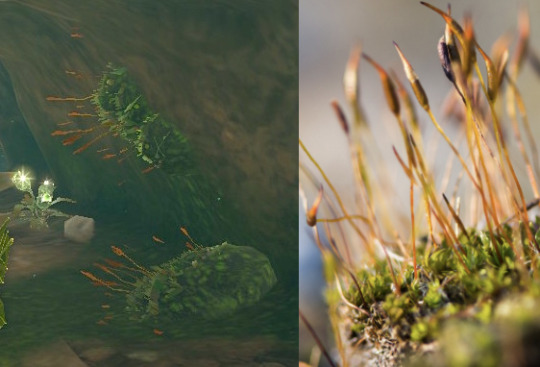

Real liverwort photo © Graham Calow, NatureSpotUK
Not yet spotted: Hornworts! Did they forget the third bryophyte sister :(
I think these next guys are probably lycopods (specifically club moss, which is not a true bryophyte moss, thanks science.) Very old, but vascular, so they're a bit more evolutionarily recent than bryophytes.

Real photo © Gloria Hanley Schoenholtz, virginiawildflowers
All the enormous curly-topped trees in the depths: Ferns! They curl like that until they unfurl. Another very old plant, though younger than bryophytes and lycopods.
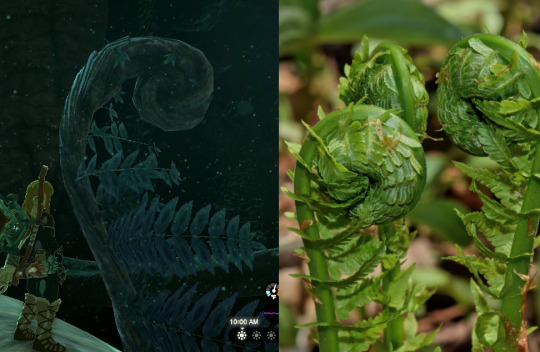
Real photo via The Cosmonaut, Wikipedia
Brightblooms and some of the other giant plants in the depths: Possibly based on a cycad? Again, a very ancient plant lineage. At this point, evolutionarily, they've developed seeds—that giant cone in the center is called a strobilus, and that's the seed structure.
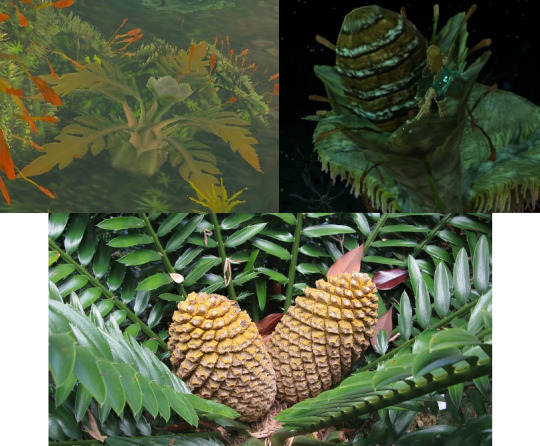
These next few plants are angiosperms, meaning they produce flowers. Angiosperms are a more recent evolutionary lineage—still many millions of years old, but it took a while to develop flowers as a reproductive tactic.
Sundelions (left) are a fun recolor of a lily. There are also some scenery lilies (right) in various places—there are yellow ones that spring up when you turn on a lightroot (which gives them literal and thematic connection to the surface) and several other varieties, including tiger lilies, throughout Hyrule. Fun note, the sundelions appear to only have 5 stamen, while other lilies in the game (correctly) have 6. Seems to be an intentional decision to make it a more distinct fantasy species.
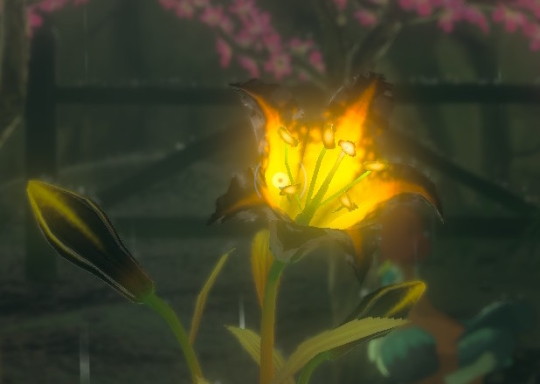
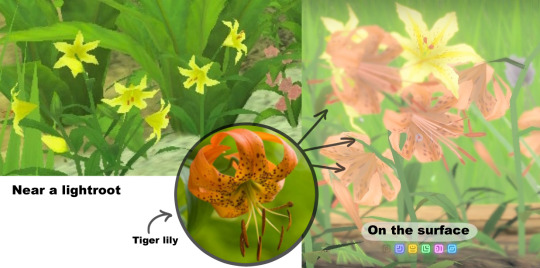
These next ones are Peruvian lilies/Alstroemeria, just used as a scenery plant but a very fun inclusion. Fun fact, not true lilies, so they're not deadly to cats like true lilies are.

Real photo © Dick Culbert, Wikipedia
Plum trees: These are also called out as plum trees in game! There's a journal in Kakariko that refers to the plum orchards.

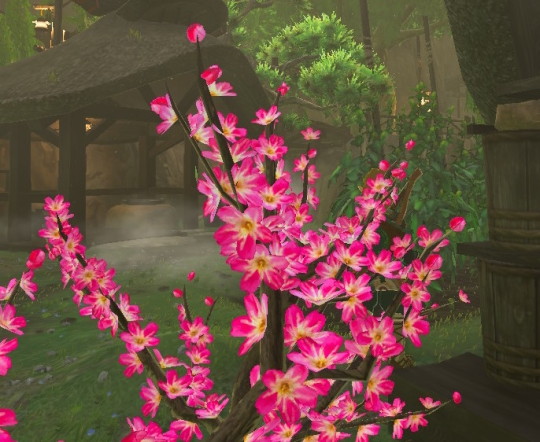
Okay I'm a little proud of figuring this one out. Bomb flowers blend a few botanical references. Superficially, the fruit resembles a type of seed pod called a capsule—specifically it's very similar to a poppy capsule. The little red thing in the center is a nice addition to resemble both a flower stigma (reproductive part that leads to the ovary) and a bomb fuse. Now, poppy capsules disperse their seeds via wind, but there are other plants who do explode their seeds outwards as a dispersal tactic! This is called explosive dehiscence.
There is one tree in particular called the sandbox tree, AKA monkey-no-climb or dynamite tree (yes, really.) Their capsules look more like little pumpkins, but are known for violently exploding when ripe—they can launch seeds at 150 miles per hour (250 km/h) and spread them roughly 200 feet (60 m) away. The photo comparison is a poppy capsule but you should def go look up dynamite tree videos.
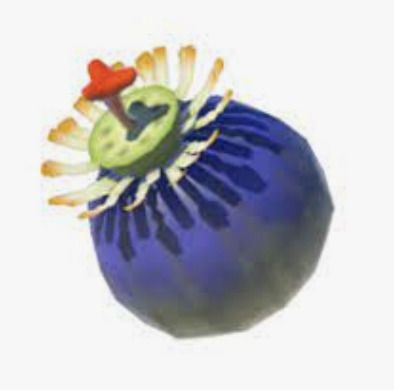
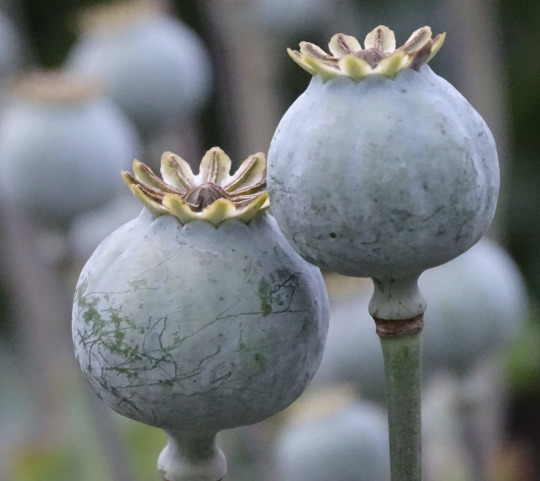
Real photo © PommeGrenade, pixabay
Fire fruits (and the other elemental fruits) grow on the same generic plant that looks kind of like it has grape leaves. Fire fruits resemble a specific botanical thing too though—the black netting is a papery calyx (part of the flower) seen in a nightshade genus, Physalis (golden berries, tomatillos, etc.)


Real photo © Helene Rogers, Alamy
I think this stuff is an Asarum, AKA wild ginger. I was actually puzzling over it until I walked past some today and went HEY
Not sure of the exact species but they're very green and heart-shaped and love being dense and low to the ground.
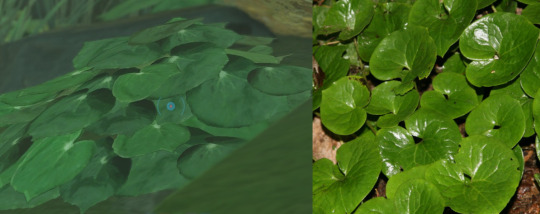
Real photo via David Stang, Wikipedia
Irises: Love irises, one of my favorite flowers and words, very happy to see them in game.

MISCELLANEA
Cup lichen! Lichen is not a plant, but a symbiotic structure of an algae + a fungi. Cup lichen is just a type of lichen formation that has a kind of vertical cup-like structure.
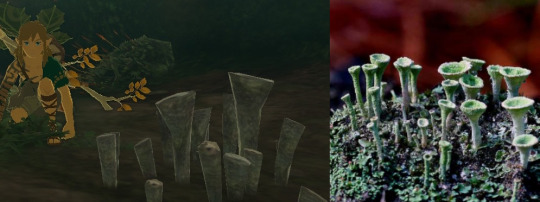
Real photo via Bernard Spragg
Geology crossover! Go look carefully at some of the whiter walls in the depths—they look like they have fossils of coral and other undersea hard-structured animals in them.
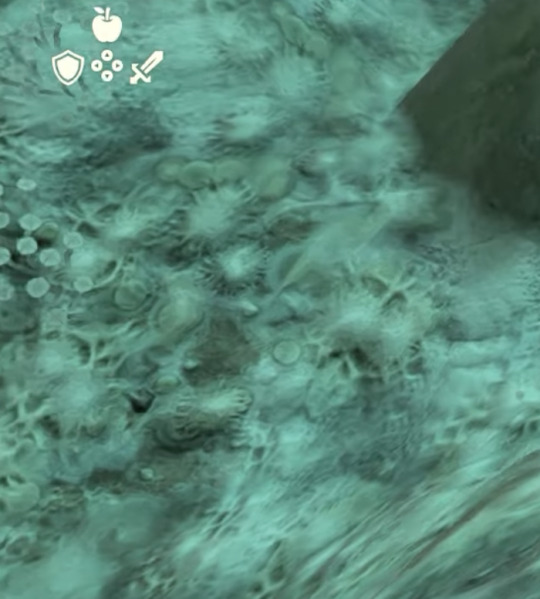
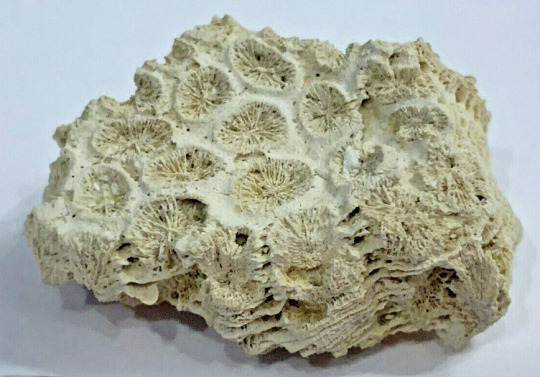
ANIMALS
Sticky lizards: Based on Diplocaulus, a very early (now extinct) amphibian! Their skulls are wacky. We're not sure whether the long sides stood out separately or were smoothly connected to the body by skin flaps, but the separate arrow-like shape is the most popular rendition.
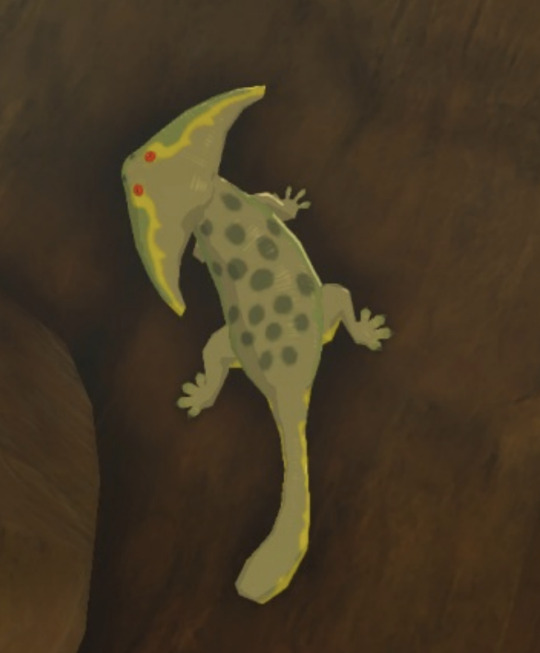

Deep firefly: Might be a stretch because it could just be a multi-winged fantasy critter, but I think the "wings" and antennae are very reminiscent of Anomalocaris, an ancient aquatic arthropod.
Update: Other folks in the notes/tags have pointed out that they're probably based on a cryptid that's especially popular in Japan: skyfish AKA rods! They show up in photos and people think they're an alien lifeform. In reality, they're an optical blur created when a lower quality video captures intermittent flaps of an insect's wings, leaving sort of a many-winged smear in the photo. Thanks to all who left info!
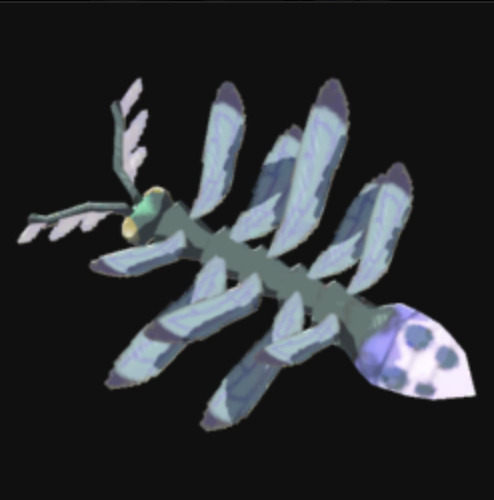
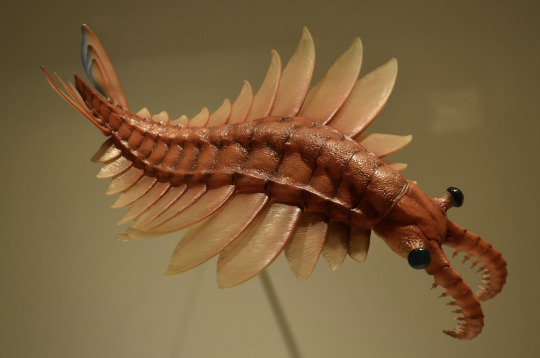

Little frox: Another stretch because it totally could just be a Hinox-like frog, but every time I see the little ones I can't help but think of like...Ichthyostega, Mastodonsaurus, Eryops, and other early amphibians. They were pretty hefty—little frox size or bigger—and had with little waddling legs. This is less "I think it's definitely this" and more "it makes me happy when I picture frox as primitive amphibians."


I haven't detailed many of the scenery animals around Hyrule because most are identifiable with the camera function—it'll tell you that a certain animal is a heron or porgy, for example, and those groups are real, even though the exact species is made up. But I think the pigeons are fun because they're all crested pigeons. Pink-necked green pigeons may have also been the inspiration for the color palettes on the wood and rainbow pigeons.
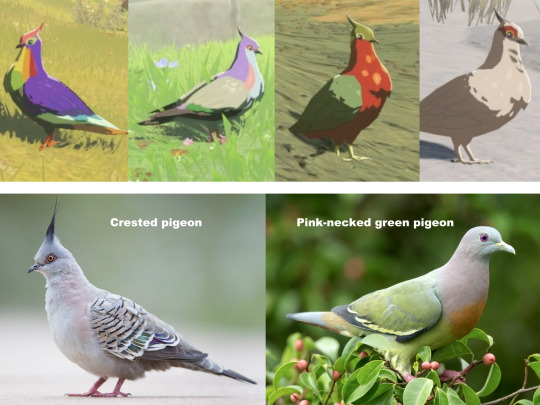
Both pigeon photos via JJ Harrison, Wikipedia
Spiny bones: Not a specific critter, but those spiny bones that you can find lying around Eldin Canyon are vertebrae—possibly from the same thing that left those big rib cages around? The top spike is the spinous process where muscles attach, the littler spikes on the side are the transverse and articular processes. The dark O in the center is the spinal cord.
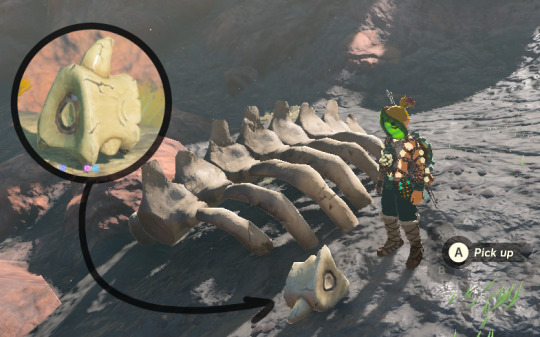
Also I made a friend who finally recognizes my purpose in Hyrule.

That's all I've got for now! Will add more as I keep playing.
#tears of the kingdom#totk#legend of zelda#loz#science fun#biology#lizard#plant#botany#image heavy#long post
7K notes
·
View notes
Text

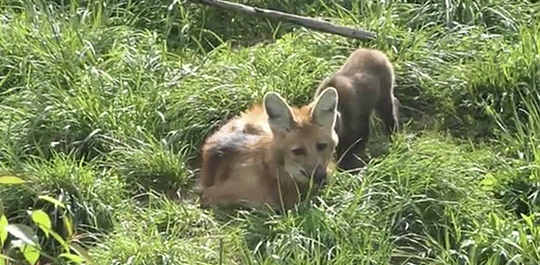

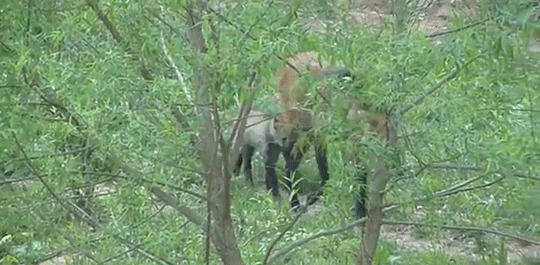


It's said to resemble a fox and a wolf, but in fact the maned wolf is the only species in the genus chrysocyon (meaning golden dog). It lives in grasslands and bushy areas of South America where it plays an important ecological role in the dispersal of fruit seeds. Animal Fact Files
#maned wolf#maned wolves#south america#cerrado#grasslands#mammalia#carnivora#omnivore#request#imperfectlovesong
1K notes
·
View notes
Text
Even bugs as small as woodlice can disperse seeds they eat, setting a new record for smallest animal recorded to do so. The Kobe University discovery underscores the crucial yet often overlooked role that small invertebrates play in ecosystems. Many plants offer fruit to animals so that they also eat the seeds and deposit them at a farther-off place after they have passed through the animal's digestive tract. For this to work smoothly, plant seeds need to be findable by and attractive to the potential disseminator, robust enough to not be damaged in the process, and small and smooth enough to actually pass through.
Continue Reading.
558 notes
·
View notes
Text

Quick little fanihi sketch, just because they're too dang cute. We see lots of these around Rota where they're thankfully still fairly abundant and serve well in their fruit-eating, seed-dispersing role on the island.
(Mariana Fruit Bat, Pteropus marianus)
#bat#fruit bat#flying fox#fanihi#northern mariana islands#pacific islands#wildlife art#scientific illustration#artists on tumblr
151 notes
·
View notes
Text
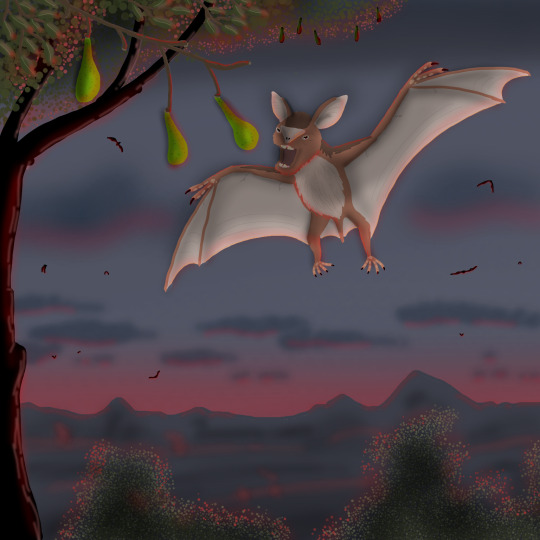
'Beta-twilight gives way to true night as the dim red sun vanishes below the horizon. In the dying scarlet gleam of its final rays, a number of winged, shadowy figures take to the air: a flock of dingbats. Dingbats, the most basal lineage of ratbats, are nocturnal flyers most convergent with Earth's true bats: clumsy on the ground with sprawled limbs, they prefer to hang from trees or rock cliffsides as they roost. They too have small eyes and poor vision, but compensate with large ears and disc-shaped snouts that allow them to navigate via echolocation, using sound, not sight, to find food and avoid obstacles. Highly succsessful, despite the presence of other diurnal ratbat species as well as wingles and pterodents, the dingbats number several hundred species strong, taking on niches such as insectivores hunting flying bugs in the air, nectar-feeders that feed on blooms that open in nighttime, and fruit-eaters that gorge on fruit and spread the seeds in their droppings.
The pictured species, the long-eared pyramidnose (Noctinyctimys pyramirrhinus) has developed a special relationship with the drooping teadrop (Cadopomus nyctophilus), a unique species of pebblefruit tree whose elongated fruits are dull green, but hang down from its branches well clear of its leaves. These are perfect for attracting its target seed-dispersers, who, being nocturnal, do not locate fruits by color but instead by echolocation, and by being in a clear flight path unobstructed by leaves and having a distinctive shape that registers a unique sonar signal to the dingbats, the tree ensures that its fruit will easily be found and more readily consumed by its partner species that allows it to propagate.'
---------
#speculative evolution#speculative biology#speculative zoology#spec evo#hamster's paradise#art one shot
61 notes
·
View notes
Text

Maned wolf – a long-legged canid native to South America, adapted for grasslands. Its long legs provide an elevated view of its surroundings. As an omnivore, it hunts small mammals, birds, and insects, and forages on plants, which often make up over 50% of its diet. The wolf apple, a large green, tomato-like fruit, is a key part of the maned wolf's diet. As the primary seed disperser, the wolf is crucial to the plant's reproduction. The wolf’s extensive home range also ensures that seeds are spread across vast areas.

Using stealth and sharp senses, the maned wolf hunts by listening for rustling prey and pouncing, fox-like. With a success rate around 20%, it's a skilled predator, despite that both young and adults are still vulnerable to other predators, like jaguars or pumas.


The maned wolf’s reputation varies across cultures-some fear it, others tolerate it, while some believe its body parts bring good luck or have medicinal properties. Once blamed for livestock killings, this myth has been debunked. Thankfully, despite that, it's not endangered.

48 notes
·
View notes
Text
Herbs and Spices of Teyvat: Liyue
Liyue is a region characteristic by its impressive geography, mainly its towering mountains and canyons that carve the land of Geo. This, apart from incredible landscapes, it creates a multitude of microclimates, in which an incredible diversity of flora can grow. And some of these, the people of Liyue have made use of them for their cooking.

Some of the more known ones are the Jueyun Chili, the Violetgrass, and the Qingxin.

The Jueyun Chili, obtained from the Jueyun Chili Plant (Capsicopunica graveolens) is a punicoid bush found wild in the northern lowlands of Liyue, but is cultivated elsewhere. Their fruits, especially their seeds and the oils the fruit secretes, have an extremely spicy, almost burning hot smell, due to high concentrations of capsaicin, and the reason why it is used in a lot of dishes in the local cuisine. This compound is however clearly meant to dissuade mammals like humans from eating it, as its dispersers are pigeons, immune to capsaicin.

The Violetgrass (Campanulocatena scandens) is a lithophytic labiate plant that can be found all across Liyue. Despite this distribution, and its very pleasant fragrance, it is not very commonly used. This is because obtaining it is not an easy task. As a lithophyte, it grows exclusively on rock crevices in walls, cliffs and other of the most inaccessible places of this very mountainous region. However, whoever manages to get a hand on some of these hard to acquire flowers, will be paid a good price for their effort.

The Qingxin (Qingxinia aspilus) is a rare, highly sought after plant in the region. This ground creeping berberid has very specific growth condition requirements, and thus can only be found at the highest peaks, where its underground rhizome helps the plant survive the intense cold. The part of the plant that is used are its sweet, almost translucent flowers, as the rest of the plant is bitter.
#genshin impact#art#illustration#clip studio paint#speculative evolution#fanart#plants and herbs#plants#botanical illustration#botany#pepper#geranium#campanula#liyue
137 notes
·
View notes
Text

Maned wolves are fascinating creatures native to central and eastern South America, particularly found in countries like Argentina, Brazil, Paraguay, Bolivia, and Peru. As the largest canid in South America, they are known for their distinctive long legs and large ears, adaptations that help them thrive in grasslands and scrub forests.
These wolves primarily feed on small mammals, such as wild guinea pigs and rabbits, but they also enjoy fruits, which makes them unique among canids. Their tall, slender build allows them to navigate tall grasses easily, and they are often solitary animals, known for their unique vocalizations that resemble a mix of a bark and a howl.
Maned wolves play a crucial role in their ecosystem by helping to control small mammal populations and dispersing seeds through their fruit consumption.
source: The Fabulous Weird Trotters
70 notes
·
View notes
Text
Spectember/Spectober 2023 #09: Things With Wings
(Apologies for the abrupt absence – I'm okay, just having everything break down at once. This is fine.)
So— back to the speculative evolution request list!
@thebigdeepcheatsy requested a "cactus-dwelling/germinating evolution of introduced rosy-faced lovebirds":
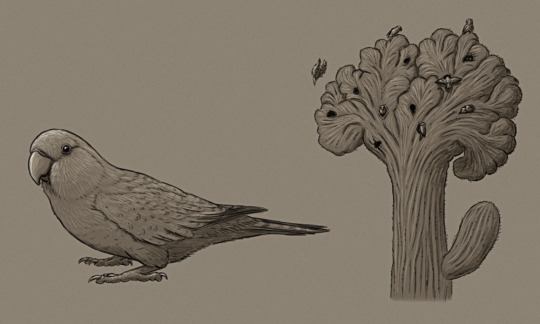
While Agapornis cheatsyi is still quite physically similar to its introduced ancestors, this lovebird has developed a close symbiotic relationship with the cactus Carnegiea ornipolis, a descendant of the modern saguaro.
Naturally fasciated, this cactus grows a splaying fan-like crown which the lovebirds excavate their shallow nest burrows into. Feeding on the cactus' fruit in early summer, the lovebirds then disperse the seeds via their droppings – a process that significantly improves propagation chances, both due to the birds commonly foraging and defecating around suitable nurse plants and the passage through their gut speeding up germination.
———
Someone calling themself "LB" asked for some "flying afrotherians":

Elbeitandraka venenifer is a descendant of tree-climbing Malagasy tenrecs that developed gliding membranes – and its lineage is now just about achieving true powered flight.
About 25cm long (~10"), its proportionally short broad wings require it to fly very fast to generate enough lift for its weight. It mostly only actively flies when traveling between roosts and feeding sites (or when escaping from threats), alternating between gliding to save energy and flapping to recover altitude.
It's an opportunistic omnivore, crawling around in the tree canopy foraging for vegetation, fruits, fungi, invertebrates, and the occasional smaller vertebrate, using its flexible sengi-like nose to probe around in crevices.
Much like modern common tenrecs it's capable of hibernating for months at a time through periods of scarce food availability. It also accumulates alkaloid toxins in its body from its arthropod prey, advertising its unpalatability to predators with bold contrasting warning coloration on its wing membranes.
———
And here's a combination of a couple of anonymous requests for both "flying heterodontosaurs" and "dragons with hind leg wings, a la sharovipteryx":
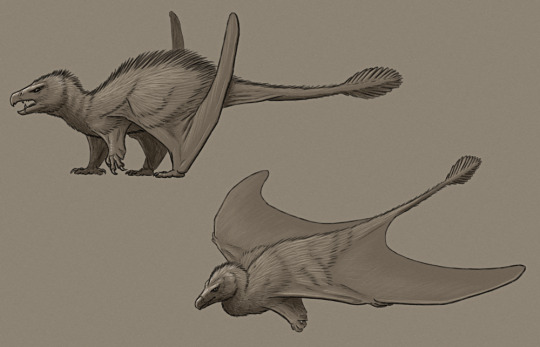
Inversodraco rapax is a highly specialized Jurassic descendant of heterodontosaurids that took to climbing and gliding, developing delta-wing-like membranes on their hindlimbs convergently similar to those of the earlier sharovipterygids.
Around 75cm long (~2'6"), it has unusually flexible hip joints for a dinosaur, able to splay its legs out to the sides to deploy wings supported by an elongated outer toe on each foot. Its arms form small forewings for stability, and its long tail ends in a vane of stiffened feathers that aid in steering.
Unlike its herbivorous-to-omnivorous ancestors it's primarily a carnivore, swooping down onto small prey and grabbing it with its talon-like forelimbs.
#spectember#spectober#spectember 2023#speculative evolution#lovebird#parrot#bird#saguaro#cactus#plant#tenrec#afrotheria#mammal#heterodontosaurid#ornithischia#dinosaur#art#science illustration#look if any mammal is going to copy bats' homework it's going to be tenrecs
308 notes
·
View notes
Photo

The Ringtail (Bassariscus astutus)
AKA “Ringtail Cat”
If there’s one thing you should know about the Ringtail cat, it’s that they are not a cat! In fact, they are a member of the raccoon family.
Their similar features to a feline earn them a few other names including miner’s cat and civet cat. Despite these misconceptions, the Ringtail is named for its tail, which is long, ringed and bushy.
Native to the southwest US and Mexico, these mysterious mammals are nocturnal and have many adaptations to help them survive at night. Their large, round eyes help them see in complete darkness and their big ears allow them to hear the slightest sounds. They can also maneuver along cliffs and between small openings and cracks, while descending headfirst by rotating their hind feet 180 degrees. With the help of their tail, they’re able to balance and climb.
When they’re not active and out hunting, they are most likely sleeping in their den which can include hollow trees, rock crevices and abandoned burrows from other animals.
They may also be hiding from predators like coyotes, bobcats, and great horned owls. As an omnivore, they eat a variety of foods, though they tend to prefer meat. Insects, mice, lizards, snakes, scorpions, fruit and plants make up a typical diet. As a result, they play an important role in the ecosystem by maintaining balance in these prey populations and aiding in seed dispersal.
via: Zion National Park - Utah, USA
505 notes
·
View notes
Text

Egyptian fruit bat | Rousettus aegyptiacus
Also known as the Egyptian rousette, this bat primarily resides in Africa, though can be found in some surrounding countries. They eat a selection of fruits and are quite important for both seed dispersal and pollination!
Have you ever heard of the phrase "blind as a bat"? The truth is, a lot of bats are just about as blind as we humans are. Fruit bats tend to see in the dark better than their insectivorous relatives, which is helpful to identify which fruits are good to eat and which aren't! Sense of smell takes a big role in this as well.
🦇
#boras posts#mammal#bats#bat week#wildlife#animals#i keep forgetting to schedule ahead of time >_<#keep ending up typing them last minute
33 notes
·
View notes